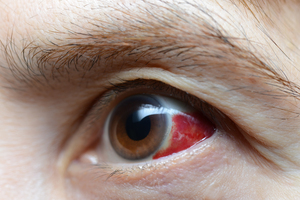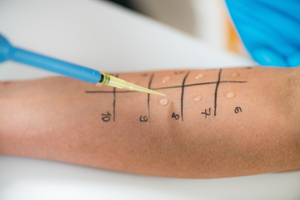Corn and Callus Treatment
Corns and calluses generally don’t cause problems but can be effectively treated and removed if they cause discomfort. Knowing all about corns and calluses can help you make the right health decision in the event these skin growths become bothersome.
Understanding corns and calluses: The basics
Corns and calluses are thick layers of skin that develop in areas that are subject to repeated friction or pressure, reports the National Institutes of Health (NIH). Corns usually develop on the toes, while calluses can develop on the hands or the bottoms of feet, adds the NIH.
According to the NIH, corns and calluses are not serious health problems but may cause bleeding and pain in some individuals. The NIH recommends treating corns and calluses by preventing friction or having the tissue removed by a doctor or dermatologist if they cause an infection or ulcer.
What is a corn? What is a callus?
Harvard Medical School describes a corn as an area of thickened skin located on the top or side of a foot or toe. The middle of a corn is known as the core, which is a dense knot of skin located at the spot subject to the greatest pressure or friction. Corns can be either hard or soft, adds Harvard Medical School.
A callus is an area of thickened skin located on your hand or on the sole of your foot. Unlike corns, which have thickened middle cores, calluses are evenly thick throughout. Corns and calluses form to protect your skin from damage caused by irritation such as prolonged rubbing and pressure, says Harvard Medical School.
What causes corns and calluses?
Most corns are caused by poorly fitting or overly tight shoes, says the NIH. Calluses are caused by prolonged rubbing, adds Harvard Medical School, such as from using a pencil, playing guitar, or playing tennis regularly. A foot callus may also be caused by tight or poorly fitting shoes, according to the NIH
What are the symptoms of corns and calluses?
Corns and calluses share many of the same symptoms. According to the NIH, symptoms include:
- Areas of thick, hardened skin on the hands or feet
- Dry and flaky skin
- Pain or bleeding at the site of thickened skin
- Difficulty walking or grasping an object at the site of thickened skin
Harvard Medical School adds that corns are usually located around the toes and may have a dense knot of skin in the middle of the hardened area. In comparison, calluses are flat, yellowish, hardened layers of dead skin.
When to call your doctor about a corn or callus
Most corns and calluses do not cause serious problems, but there are some cases that may require medical treatment. According to the NIH and Harvard Medical School, you should call your doctor about a corn or callus if:
- You have diabetes and are experiencing problems with your feet.
- Your corn or callus is not improving with self-care or medical treatment.
- You continue to experience redness, warmth, pain, or drainage from the corn or callus.
- You experience difficulty with activities such as walking or grasping objects due to the corn or callus.
Corns and calluses can be safely treated to reduce your pain and help you feel more comfortable. Your doctor or dermatologist can examine your corn or callus, talk to you about your symptoms, and recommend the best treatments for you. According to the University of Rochester, corns and calluses treatment may involve trimming the skin, applying salicylic acid, receiving cortisone injections, or having surgery to correct misaligned bones or joints.
How can I prevent corns and calluses?
According to the University of Rochester, corns and calluses can often be prevented by taking steps to avoid or remove the source of friction or pressure that is causing them. For example, the University of Rochester recommends wearing comfortable, properly fitting shoes to prevent calluses and corns on your feet.
Other steps you can take to prevent corns and calluses, according to the NIH and Harvard Medical School, include:
- Wearing gloves to protect your hands during activities that cause friction, such as playing tennis, lifting weights, and gardening.
- Cushioning shoes with moleskin to reduce pressure on the skin.
- Wearing only shoes that have wide and deep toe boxes that leave plenty of room around the toes to reduce friction.
Find Corn and Callus Treatment near you
- Alabama
- Alaska
- Arizona
- Arkansas
- California
- Colorado
- Connecticut
- Delaware
- Florida
- Georgia
- Hawaii
- Idaho
- Illinois
- Indiana
- Iowa
- Kansas
- Kentucky
- Louisiana
- Maine
- Maryland
- Massachusetts
- Michigan
- Minnesota
- Mississippi
- Missouri
- Montana
- Nebraska
- Nevada
- New Hampshire
- New Jersey
- New Mexico
- New York
- North Carolina
- North Dakota
- Ohio
- Oklahoma
- Oregon
- Pennsylvania
- Rhode Island
- South Carolina
- South Dakota
- Tennessee
- Texas
- Utah
- Vermont
- Virginia
- Washington
- Washington DC
- West Virginia
- Wisconsin
- Wyoming
Corn and Callus Treatment FAQs
What is a callus?
The definition of callous, according to the NIH, is “thickened skin on your hands or the soles of your feet.” Calluses on the feet may be caused by poorly fitting shoes or activities like running, while calluses on the hands may be caused by friction from using tools, playing tennis, or gardening, says the University of Rochester.
What’s the difference between a corn and a wart?
Corns can often be mistaken for warts, says the NIH. However, corns will have a visible core of dense, hardened skin at their centers, while plantar warts usually feature brownish dots instead. The NIH adds that a doctor can take a skin sample from the growth if they are unable to determine whether you have a corn, plantar callus, or plantar wart.
What is a corn on your foot?
A corn on the foot is an area of thickened skin caused by pressure or friction from poorly fitting shoes, says the NIH. This repeated pressure and rubbing cause your skin cells to divide and grow more than usual to produce thickened skin. Over time, a corn can develop into a callus, adds the NIH.
What is a foot corn?
A foot corn is a corn that develops on your toe or foot. According to Harvard Medical School, corns that form on the upper surfaces of toes are usually firm, hard, and dry, while corns that form between the toes are usually soft and moist.
What causes corns on feet?
Corns on feet are usually caused by poorly or tight-fitting shoes and daily physical activities such as running, says the University of Rochester. The NIH adds that corns on feet may also be caused by foot bones that are out of alignment, due to the toes constantly rubbing against the insides of shoes.
What’s the difference between a corn and a callus?
When looking at a corn vs. a callus, a corn is usually located at the top or side of a toe, while a callus can be located on your hand or at the bottom of your foot, reports the NIH. Additionally, corns often have a denser, hardened center, while calluses often have an even layer of thickness.
What’s the difference between a corn and a bunion?
A bunion is a bump that forms on the inside edge of your toe between the big toe and second toe, reports the NIH. A corn is an area of thickened skin on the top or side of a toe caused by repeated friction or pressure.
Where can I get corns and calluses removed?
Corns and calluses can often be effectively treated and removed by a doctor who specializes in dermatology. Use Solv to find a highly rated dermatologist in your area who can discuss your options for corn removal and toe callus treatment. Solv features a directory of only top-rated medical providers so you and your family can gain easy access to quality health care.
Solv has strict sourcing guidelines and relies on peer-reviewed studies, academic research institutions, and medical associations. We avoid using tertiary references.
Everyday Healthcare, Simplified
Expert advice to help you live your best life








